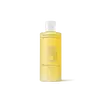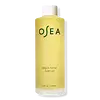What's inside
What's inside
 Key Ingredients
Key Ingredients

 Benefits
Benefits

 Concerns
Concerns

 Ingredients Side-by-side
Ingredients Side-by-side

Caprylic/Capric Triglyceride
MaskingGlyceryl Caprylate
EmollientPolyglyceryl-3 Palmitate
EmollientSimmondsia Chinensis Seed Oil
EmollientSalvia Lavandulifolia Herb Oil
PerfumingSaccharomyces/Grape Ferment Extract
Skin ConditioningPelargonium Graveolens Flower Oil
MaskingAnthemis Nobilis Flower Oil
MaskingRosmarinus Officinalis Flower Oil
PerfumingPhospholipids
Skin ConditioningTocopherol
AntioxidantLeuconostoc/Radish Root Ferment Filtrate
AntimicrobialBenzyl Alcohol
PerfumingCitral
PerfumingCitronellol
PerfumingGeraniol
PerfumingLimonene
PerfumingLinalool
PerfumingCaprylic/Capric Triglyceride, Glyceryl Caprylate, Polyglyceryl-3 Palmitate, Simmondsia Chinensis Seed Oil, Salvia Lavandulifolia Herb Oil, Saccharomyces/Grape Ferment Extract, Pelargonium Graveolens Flower Oil, Anthemis Nobilis Flower Oil, Rosmarinus Officinalis Flower Oil, Phospholipids, Tocopherol, Leuconostoc/Radish Root Ferment Filtrate, Benzyl Alcohol, Citral, Citronellol, Geraniol, Limonene, Linalool
Vitis Vinifera Seed Oil
EmollientOryza Sativa Bran Oil
EmollientPrunus Armeniaca Kernel Oil
MaskingPersea Gratissima Oil
Skin ConditioningLimnanthes Alba Seed Oil
Skin ConditioningSimmondsia Chinensis Seed Oil
EmollientAnthemis Nobilis Flower Oil
MaskingCitrus Latifolia Peel Oil
MaskingLeptospermum Petersonii Oil
MaskingOryza Sativa Bran Extract
Skin ConditioningRosmarinus Officinalis Leaf Extract
AntimicrobialHelianthus Annuus Extract
EmollientTocopherol
AntioxidantJuniperus Communis Fruit Oil
MaskingRosmarinus Officinalis Leaf Oil
MaskingLavandula Angustifolia Oil
MaskingVitis Vinifera Seed Oil, Oryza Sativa Bran Oil, Prunus Armeniaca Kernel Oil, Persea Gratissima Oil, Limnanthes Alba Seed Oil, Simmondsia Chinensis Seed Oil, Anthemis Nobilis Flower Oil, Citrus Latifolia Peel Oil, Leptospermum Petersonii Oil, Oryza Sativa Bran Extract, Rosmarinus Officinalis Leaf Extract, Helianthus Annuus Extract, Tocopherol, Juniperus Communis Fruit Oil, Rosmarinus Officinalis Leaf Oil, Lavandula Angustifolia Oil
Alternatives
Ingredients Explained
These ingredients are found in both products.
Ingredients higher up in an ingredient list are typically present in a larger amount.
This oil is created by distilling the dried flower heads of the Roman Chamomile flower.
Chamomile is rich in antioxidants and has anti-inflammatory properties. Several compounds found in chamomile help with soothing, such as bisbolol.
This oil comes from the seeds of the desert shrub called Jojoba. It is more commonly known as jojoba oil, a non-comedogenic oil.
Jojoba oil does not contain fragrance and has many fatty-acids, making it a great soothing ingredient.
It also contains Vitamin E, a great moisturizing ingredient. Vitamin E is also an antioxidant and protects your skin against oxidative damage.
This ingredient humectant properties, meaning it helps draw moisture from the air. This helps keep your skin hydrated.
While jojoba has antibacterial properties, it is only able to kill some strains of bacteria.
Studies also show it helps in wound healing. In fact, Indigenous cultures have used jojoba as a moisturizer and to help treat burns for centuries.
Fun fact: Jojoba oil similar to natural human skin sebum, so it has a great effect on dry skin. It is also promising with helping to regulate sebum production.
Due to its fatty acid content, Jojoba oil may not be fungal acne safe. We recommend speaking with a professional if you have any concerns.
Learn more about Simmondsia Chinensis Seed OilTocopherol (also known as Vitamin E) is a common antioxidant used to help protect the skin from free-radicals and strengthen the skin barrier. It's also fat soluble - this means our skin is great at absorbing it.
Vitamin E also helps keep your natural skin lipids healthy. Your lipid skin barrier naturally consists of lipids, ceramides, and fatty acids. Vitamin E offers extra protection for your skin’s lipid barrier, keeping your skin healthy and nourished.
Another benefit is a bit of UV protection. Vitamin E helps reduce the damage caused by UVB rays. (It should not replace your sunscreen). Combining it with Vitamin C can decrease sunburned cells and hyperpigmentation after UV exposure.
You might have noticed Vitamin E + C often paired together. This is because it is great at stabilizing Vitamin C. Using the two together helps increase the effectiveness of both ingredients.
There are often claims that Vitamin E can reduce/prevent scarring, but these claims haven't been confirmed by scientific research.
Learn more about Tocopherol